
DUBAI- The flag carrier of the UAE, Emirates (EK), continues to dominate international skies in 2025. Emirates is one of the best airlines in the world, with an expansive route network and a modern and luxurious fleet.
The airline has a sharp focus on efficiency and passenger experience. As of April 2025, Emirates operates a staggering 3,000+ weekly flights to 142 international destinations in 77 countries, served through its home base at the ultra-modern Terminal 3 of Dubai International Airport.
From its foundation in 1985, Emirates has grown into the largest airline in the Middle East and a true global connector. In 2025, the airline will consist of a fleet of 253 wide-body aircraft. This includes Airbus A380s, Boeing 777s, and the newly introduced Airbus A350s.
Emirates is a powerhouse in long-haul aviation. The airline has 301 aircraft on order, including the much-anticipated Boeing 777X and Boeing 787s, setting the stage for the next phase of growth.
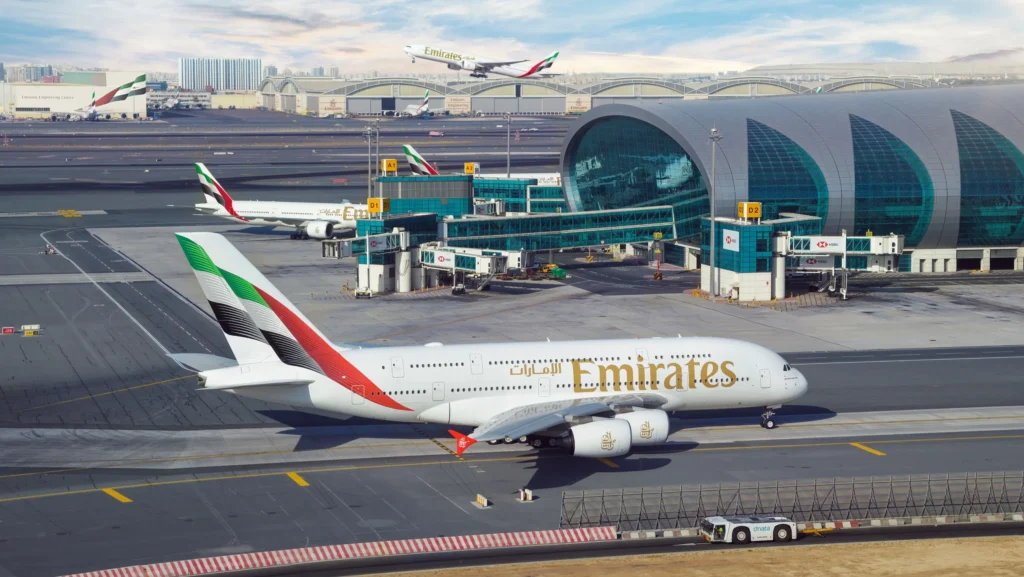 Photo: Emirates
Photo: EmiratesTop 10 Routes of Emirates
Among its sprawling global network, which routes stand out as the busiest and most strategically important? Let’s take a deep dive into Emirates’ top 10 routes in 2025 by weekly one-way seat capacity.
1. Dubai – London Heathrow
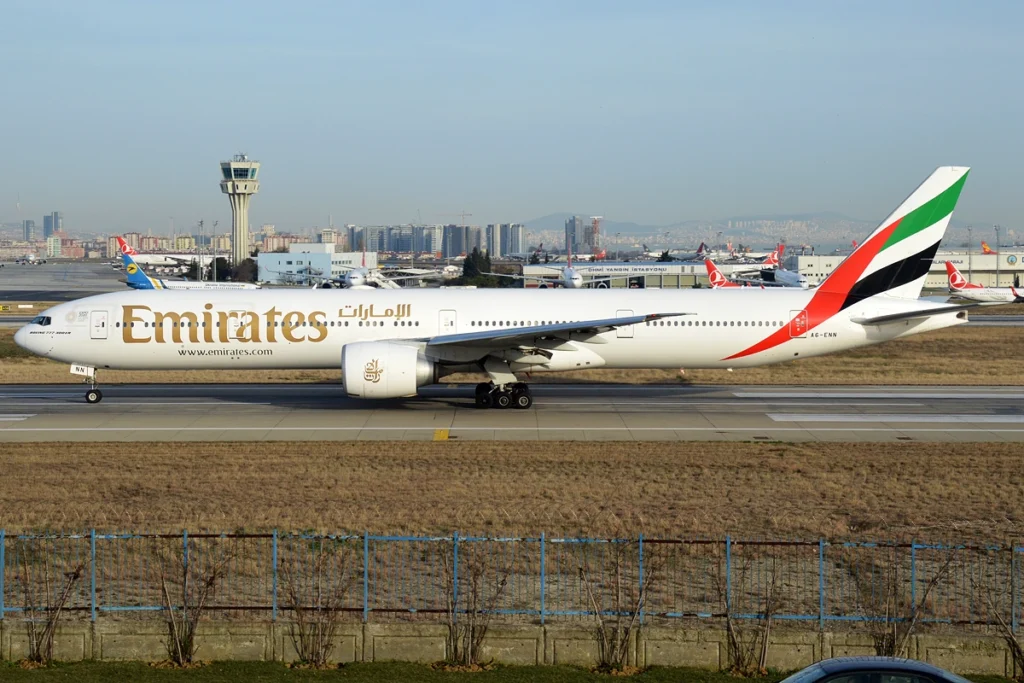 Photo: By Anna Zvereva from Tallinn, Estonia – Emirates, A6-ENN, Boeing 777-31H ER, CC BY-SA 2.0, https://commons.wikimedia.org/w/index.php?curid=78143543
Photo: By Anna Zvereva from Tallinn, Estonia – Emirates, A6-ENN, Boeing 777-31H ER, CC BY-SA 2.0, https://commons.wikimedia.org/w/index.php?curid=78143543The Dubai–London Heathrow corridor remains Emirates’ crown jewel in 2025. With six daily flights, this high-yield, high-capacity route is fully operated by the airline’s flagship Airbus A380 aircraft.
Four of the six daily flights are run using 4-class A380s — featuring First, Business, Premium Economy, and Economy. The other two daily flights are operated with the 3-class version of the aircraft.
The seat distribution translates to a mammoth 20,818 weekly one-way seats. This makes this the highest-capacity route in Emirates’ entire network. The route’s popularity stems from a mix of business travel, tourism, VFR (visiting friends and relatives) traffic, and transit passengers connecting to Australia, Africa, and Asia via Dubai.
2. Bangkok – Dubai
Thailand’s capital city, Bangkok, continues to be one of the busiest destinations for Emirates in Southeast Asia. In 2025, the airline operates five daily flights between Bangkok and Dubai, with four flights on the A380 and one on the Boeing 777-300ER.
The route uses a mix of 2-class and 3-class A380s, plus a 2-class 777-300ER. This results in a combined 18,627 weekly one-way seats. This route is crucial not just for leisure travelers, but also for cargo operations and regional connectivity into ASEAN and Indochina.
3. Dubai – Mumbai
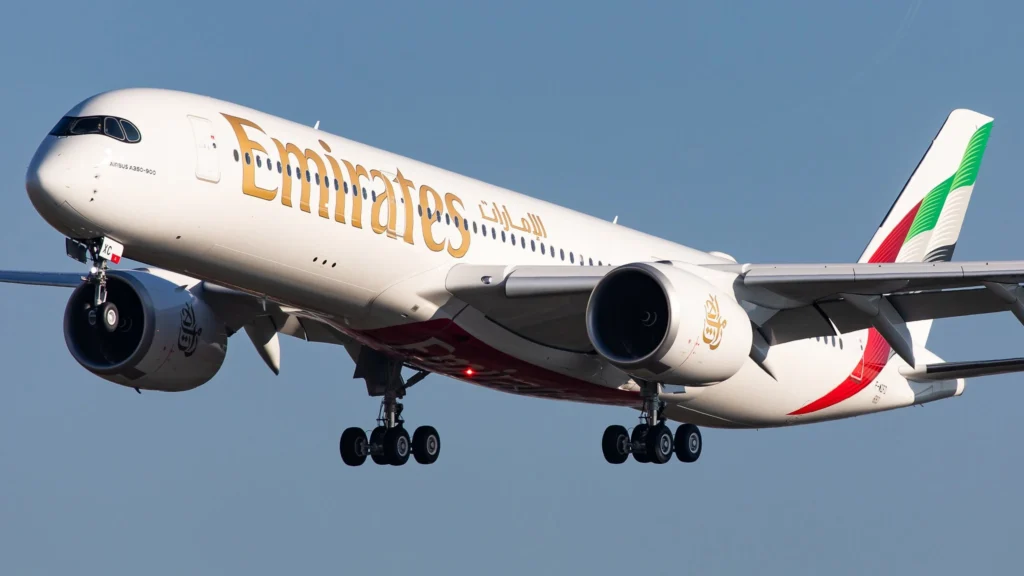 Emirates Airbus A350 | Photo: Clément Alloing
Emirates Airbus A350 | Photo: Clément AlloingMumbai, India’s financial capital, is one of Emirates’ most vital South Asian destinations. The Dubai–Mumbai route sees five daily flights with a mix of aircraft. Emirates operates one daily A380-800 (4-class), three daily B777-300ERs, and one daily Airbus A350-900.
This mix brings the weekly one-way seat count to 13,006, underlining Mumbai’s importance in both business and ethnic traffic segments. The recent inclusion of premium economy and the A350 adds variety to the onboard experience, enhancing Emirates’ appeal to a broader traveler base.
4. Dubai – Cairo
Egypt’s capital, Cairo, is one of the top performers in Emirates’ network. In 2025, the airline operates four daily flights, with three on the A380 and one on the Boeing 777-200LR. The aircraft are all configured in three classes, catering to the strong demand for business, tourism, and VFR travel.
With 12,586 weekly one-way seats, this route highlights Emirates’ significant presence in North Africa and reflects Cairo’s pivotal role as a major gateway in the Arab world.
5. Singapore – Dubai
Singapore is one of Emirates’ key Asian hubs. Operating four daily flights, Emirates operates two daily flights on the A380 and two daily flights on the 777-300ER. This route is a vital connector between Southeast Asia and the rest of the world via Dubai.
The A380s feature Emirates’ luxurious four-class layout, while the 777s cater to the high business and premium leisure traffic. The combined 11,837 weekly one-way seats reaffirm the strategic importance of Singapore in Emirates’ transcontinental operations.
6. Dubai – Paris
The French capital continues to be a powerhouse route for Emirates. In 2025, the airline runs three daily flights between Dubai and Paris Charles de Gaulle, all using 3-class Airbus A380s.
This route brings in 10,885 weekly one-way seats, highlighting its strength in both business and luxury leisure travel, as well as strong premium demand. Paris is the only other European destination after London to make it to the top 10. The availability of direct A380 service multiple times a day reflects Paris’ increasing importance to Emirates’ European strategy.
7. Dubai – Jeddah
 Photo: Clément Alloing
Photo: Clément AlloingSaudi Arabia’s second-largest city, Jeddah, sees three daily A380 flights from Dubai. Despite being a short-haul international route, the use of the A380s here shows the sheer volume of passenger demand, driven by religious tourism (Hajj and Umrah), business, and family travel.
This route sees 10,689 weekly one-way seats by Emirates, making it the highest-capacity Emirates route within the Gulf Cooperation Council (GCC) region.
8. Sydney – Dubai
Australia is a key market for Emirates, and Sydney is its strongest-performing city in the region. The Dubai–Sydney route is operated three times daily using A380-800 aircraft, with a mix of 3-class and 4-class configurations.
This long-haul sector accounts for 10,199 weekly one-way seats, serving a mix of leisure and corporate travelers. Sydney also acts as a critical hub for onward codeshare connections with Qantas to domestic destinations in Australia and beyond to New Zealand.
9. Dubai – Male
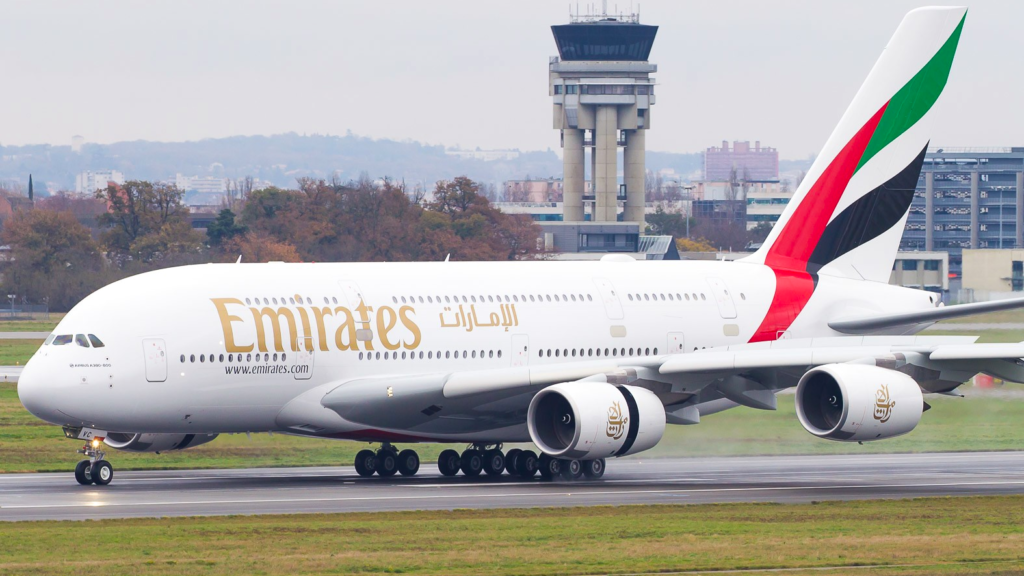 Emirates Airbus A380 | Photo: Clément Alloing
Emirates Airbus A380 | Photo: Clément AlloingThe Maldives continues to be one of the most sought-after leisure destinations in the world, and Emirates plays a key role in connecting global travelers to this Indian Ocean paradise. The airline operates four daily flights to Male using 3-class Boeing 777-300ERs.
The route contributes 10,080 weekly one-way seats, reflecting the Maldives’ consistent popularity among leisure travelers, luxury vacationers, and wellness travelers from Europe, the Middle East, and North America.
10. New Delhi – Dubai
The Indian capital city, New Delhi, rounds out the top ten with four daily flights, all operated by 3-class Boeing 777-300ERs. New Delhi is the 2nd Indian city in the top 10. With 9,912 weekly one-way seats, this route reflects the deep commercial and cultural ties between India and the UAE.
This route also supports significant onward traffic from Dubai to Europe, North America, and Africa. The sector also sees a high number of VFR and Business travellers as well.
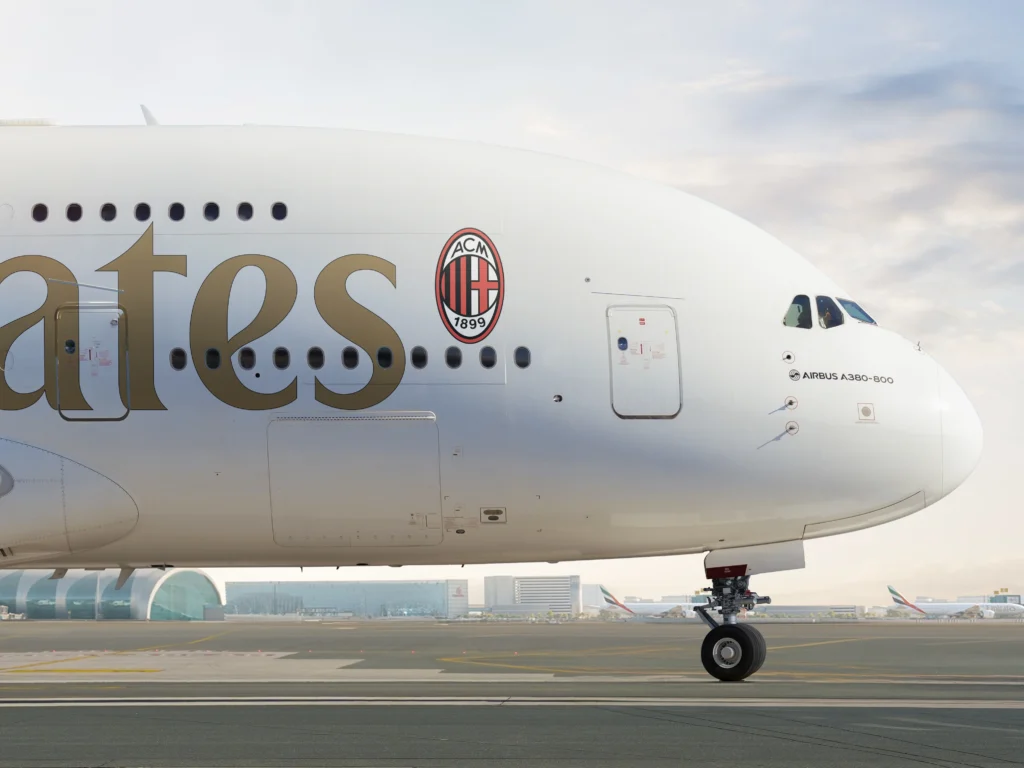 Photo: Emirates
Photo: EmiratesBeyond the Numbers
While these routes are the top ones for Emirates in terms of volume, they also represent Emirates’ strategic focus areas.
Emirates boasts a massive network across 6 continents. Europe remains a core continent for Emirates, with high capacity and destinations to cities like London, Paris, and other major European cities.
South Asia is another key growth engine, especially routes into India, which combine VFR, business, and transit demand. Asia-Pacific, especially Southeast Asia and Australia, offers high premium cabin yields and strong leisure segments.
The Gulf and MENA region support high-density routes with frequent, large-capacity aircraft, driven by religious and business travel.
Emirates’ Fleet & Network Strategy
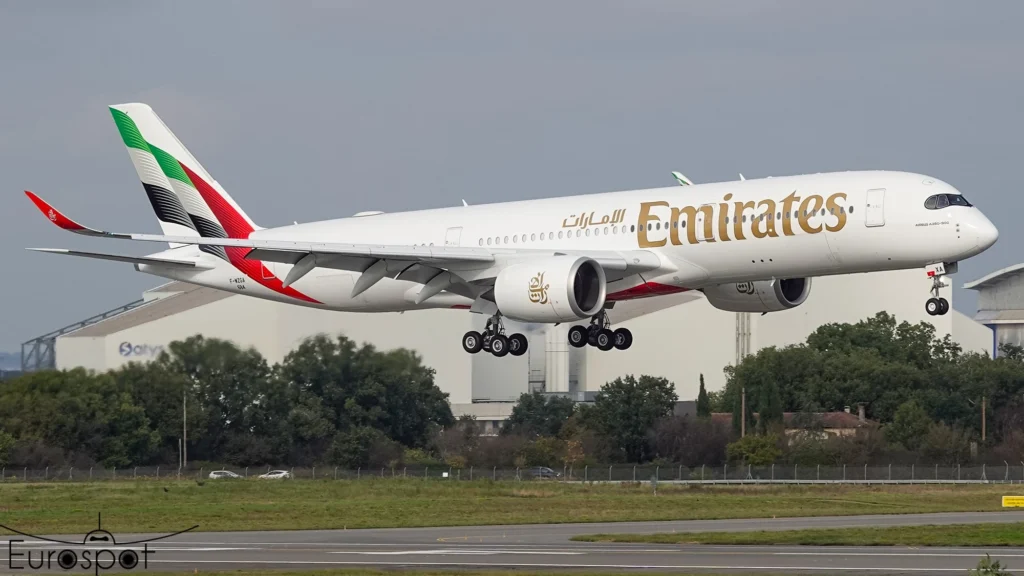 Photo: Eurospot
Photo: EurospotWhat enables such route dominance is Emirates’ strategy. The airline operates the world’s largest fleets of both Airbus A380s and Boeing 777s. These aircraft offer superior range, capacity, and premium configuration flexibility. Emirates is also preparing for the future with new deliveries of the Airbus A350 and Boeing 787 Dreamliner, offering enhanced fuel efficiency and flexibility for thinner long-haul routes.
As of April 2025, Emirates operates 123 Boeing 777-300ERs. The airline has 116 active Airbus A380-800s in its fleet. Both of these aircraft types have 2, 3, and even 4 class configurations. Emirates also operates 10 Boeing 777-200LRs, which are in 2 class configurations. Also, Emirates recently inducted 4 Airbus A350-900s with a 3-class configuration, with no premium economy on board.
Meanwhile, Dubai International Airport remains a crucial hub, offering seamless connections for travelers from East to West and North to South. Dubai International Airport is also the busiest international Airport in the world. Emirates’ position as a network carrier — offering one-stop access to nearly every major market in the world — remains unchallenged.
Bottomline
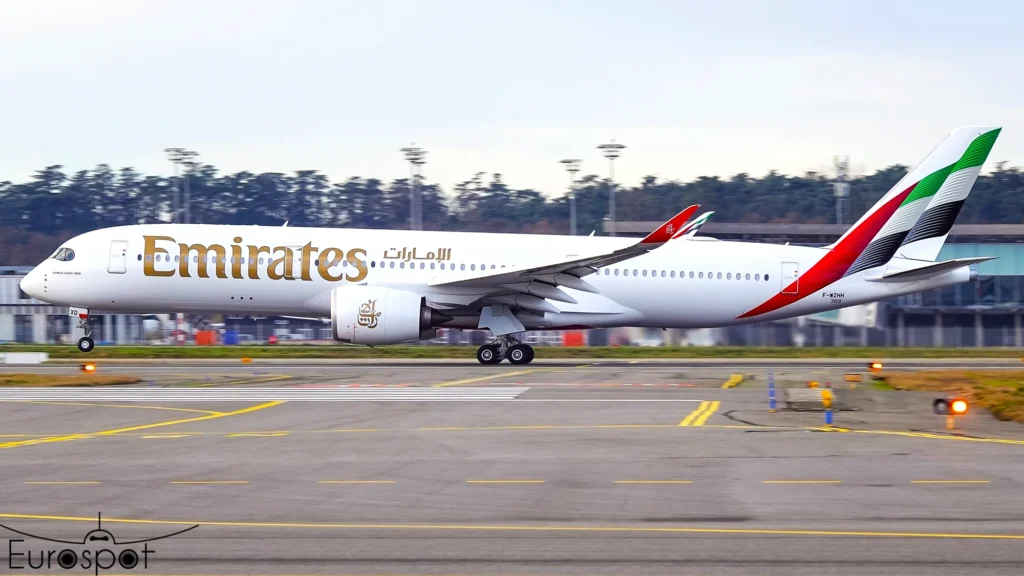 Photo: Eurospot
Photo: EurospotIn 2025, Emirates’ top 10 routes are more than just numbers on a chart. They represent the airline’s global vision, operational muscle, and premium service ethos. From London to Bangkok and Cairo to Sydney, these routes reflect not only passenger demand but also show how Emirates continues to dominate global aviation.
The airline will continue to expand its fleet and to innovate on the passenger experience front — including its much-lauded Premium Economy product. one thing is clear: Emirates remains at the forefront of global aviation.
Stay tuned with us. Further, follow us on social media for the latest updates.
Join us on Telegram Group for the Latest Aviation Updates. Subsequently, follow us on Google News
Emirates Revives Oldest Airbus A380 in the World
The post Emirates Airline Top 10 Busiest Routes in 2025 appeared first on Aviation A2Z.
